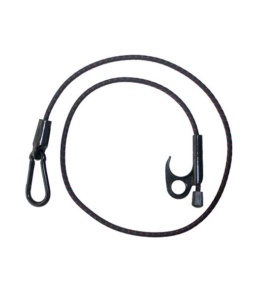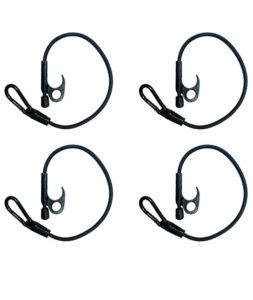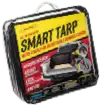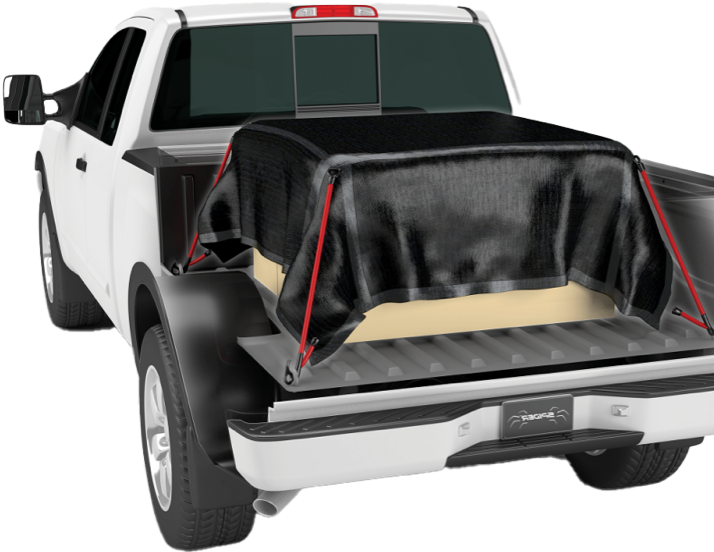Wondering What to Bring Camping?
Whether you’re planning your first-ever camping trip or you’re more seasoned for camping than a canvas swag, you’ll need to know what to bring camping.
This camping checklist should help to equip you with the right gear regardless of where you’re setting up your tent and staying. From a family-friendly campsite fit with amenities to the more rugged wilds of Australia, you should be steadily prepared to handle whatever’s thrown your way.
Camping Checklist
Shelter
A comfortable and secure shelter is fundamental for a smooth camping trip. Your shelter protects you from the elements and ensures a good night’s sleep, which is essential for enjoying your outdoor activities. This could be something as simple as a swag for yourself, or a pop-top trailer or caravan to bring some of the comforts of home with you.
Here’s what to bring to ensure shelter and comfort:
- Tent with stakes or pegs, and guylines (plus a mallet to hammer pegs in)
- Bungee cords for securing tarps, storing items, and repairs
- Tarps for additional shelter, ground cover, or covering trailers.
- Sleeping bag rated for the season
- Sleeping pad or air mattress for insulation and comfort
- Extra blankets for warmth on colder nights
This list covers the essentials needed to create a comfortable living space at your campsite, regardless of the weather conditions you might face.
Clothing and Footwear
The right clothing and footwear are crucial for staying comfortable and protected when you’re away from your shelter, regardless of the weather. Here’s what to pack:
- Weather-appropriate tops and bottoms
- Additional pairs of socks
- Sleepwear
- Insulating layers for warmth in cold conditions (particularly chilly mornings and nights)
- Comfortable walking or hiking shoes for varied terrains
- Swimwear like rash vests and quick-drying boardshorts
- Hats, gloves, and weather protection like rain jackets or sun shirts
These items will help you manage different weather conditions and ensure you enjoy your outdoor activities comfortably.
Food & Water
Proper nutrition and hydration are critical for staying energised and healthy on your camping trip and avoiding emergencies. Here’s what to pack:
- Non-perishable food items and snacks for easy meals on the go and energy boosts
- Fresh water supply or methods for water purification to ensure safe drinking water
- Coolers and ice packs for keeping perishable food items fresh
- Water bottles to travel with you wherever you go
Packing these essentials helps maintain your energy levels and health throughout your adventure, ensuring you can fully enjoy your time outdoors.
Cooking and Eating Supplies
Having the right supplies for cooking and eating is essential for keeping energy levels high and for keeping everyone happy. Whether you’re camping solo, or feeding the family, you should bring:
- Portable stove or barbecue for cooking
- Fuel or gas for the stove or barbecue
- Cooking utensils, pots, and pans for meal preparation
- Eating utensils, plates, and cups for serving food
- Biodegradable soap and sponges for cleaning up
- Sealed containers and storage to store food for freshness to prevent attracting wildlife
These items ensure you can prepare and enjoy meals comfortably while maintaining cleanliness at your campsite.
Safety items
Even in many family-friendly campsites close to populated areas, reception can be spotty and phones may not work in the event of emergencies. Packing with health and safety in mind can ensure your camping trip goes well.
- Fully stocked first aid kit
- Medicinal products like paracetamol and relief heat packs or ointments for itchy insect bites
- Light sources like torches, headlamps, or lanterns
- Personal locator beacon (if camping in a remote location)
- Offline map (you can download maps to your phone for use without data using software like Avenza or Google Maps, or you can bring a physical printed map with you)
- Fire blanket or extinguisher if you plan to have a fire
Entertainment
When you’ve settled down for the day, it pays to have a few items for entertainment around the campsite (especially when camping with the family).
- Board games or cards
- Books or magazines
- Music players or instruments
- Tools to explore local wildlife and nature like magnifying glasses, binoculars and local wildlife encyclopedias for the little ones to learn about the area
Always remember to respect other campers and the local wildlife and keep noise to a minimum, particularly at night.
Tools
Packing all the camping essentials won’t mean a lot without the necessary tools and equipment to ensure everything stays upright. Out in the elements, camping gear can be prone to punctures, tears, and more. So, you’ll want to pack a few camping tools to ensure everything is kept in working order:
- Bungee cords for storing supplies when not in use or for assistance in tying items down to trailers or trays
- Trailer covers or ute covers for protecting supplies when not in use or for when travelling to and from campsites
- Additional pegs for tents, gazebos, and ground covers in case some are lost or damaged in use
- Spare batteries for camping supplies like lanterns, or for personal devices like phones
- Duct tape or cloth tape for patching up damages such as leaks in bases of tents
- Dustpan and brush for general spills or crumbs, sand, and for tidying once leaving a campsite.
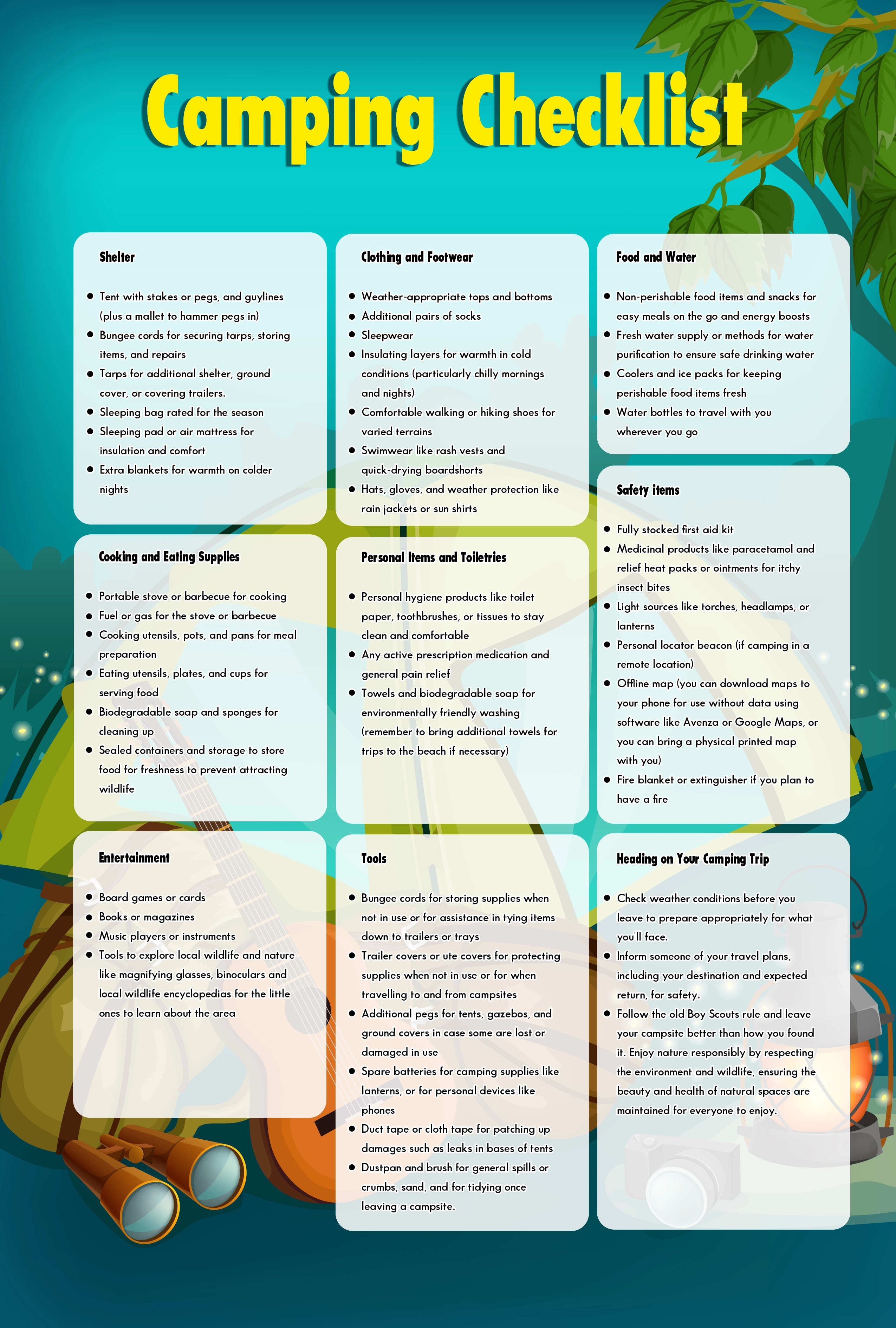
Heading on Your Camping Trip
Got your camping checklist all ticked off with everything you need to bring? Remember that preparing for your trip also requires a few extra bits and pieces to be mindful of for your safety and for the environment you choose to camp in.
- Check weather conditions before you leave to prepare appropriately for what you’ll face.
- Inform someone of your travel plans, including your destination and expected return, for safety.
- Follow the old Boy Scouts rule and leave your campsite better than how you found it. Enjoy nature responsibly by respecting the environment and wildlife, ensuring the beauty and health of natural spaces are maintained for everyone to enjoy.
By following these guidelines, and remembering to bring everything you need for camping, you’ll be set for a safer, more enjoyable time on the road, allowing you to fully appreciate everything camping has to offer.
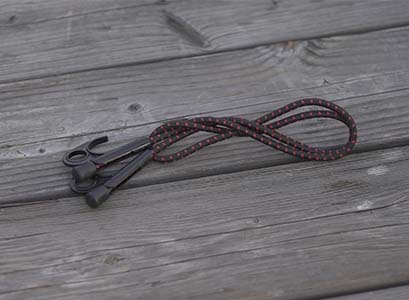
Why the Materials of Bungee Cords Matter
Bungee cords, also known as shock cords or occy straps, are versatile tools known for their elasticity, strength, and ease of use. Bungee cords can be used in a wide variety of applications, making them a must-have in workshops and garages across the country:
- Securing equipment and vehicle load covers
- Home organisation and storage
- Outdoor activities
And because of their wide variety of uses, the materials used in bungee cords need to be durable, adaptable, and safe.
Why are Bungee Cords Made from Certain Materials?
The materials used in the construction of bungee cords play an important role in how bungee cords work. And understanding these materials will help you choose the right bungee cord for your use.
The choice of materials in bungee cords is not just about immediate functionality. It also covers durability, environmental sustainability, and most importantly, the safety of the user.
Performance and Durability
Elasticity and Stretchability
The core of the bungee cord is often made with rubber or a synthetic rubber-like material. These materials define its ability to withstand stretching. Higher-quality materials ensure the cord can extend sufficiently without breaking or losing its elasticity over time.
Tensile Strength
The tensile strength of a bungee cord determines how much weight it can bear. The tensile strength of the bungee cord is influenced by the materials used in both the core and the outer sheath.
Weather Resistance
Exposure to the elements such as UV rays, rain, and temperatures can degrade the strength and durability of bungee cords. Materials like Ethylene Propylene Diene Monomer (EPDM) offer protection to weathering, making them suited to harsh conditions.
Abrasion Resistance
The durability of a bungee cord is also tested against abrasion. Particularly when being used to secure loads, sheathing materials like nylon provide a strong protective layer, reducing wear and tear over time.
Safety Considerations
Load Capacity
Choosing a bungee cord with appropriate materials for its intended load is vital. Overstretching or overloading can lead to snapping, which can cause injury or damage.
Environmental Compatibility
Certain materials may degrade quickly in specific environments. For instance, natural rubber may not perform well in oily or greasy environments, leading to potential safety hazards.
Quality and Longevity
High-quality materials ensure that the bungee cord retains its properties over time. Inferior materials might lose elasticity or strength, leading to unexpected failures.
Chemical Resistance
Exposure to chemicals can compromise the integrity of bungee cords. Selecting materials resistant to chemicals common in the cord’s usage environment is crucial for safety.
Common Materials in Bungee Cords
Each of the materials used in bungee cords brings distinct properties, contributing to their functionality, durability, and application suitability. The choice of material combination depends on the specific requirements of the usage scenario, balancing factors like elasticity, strength, and environmental resistance.
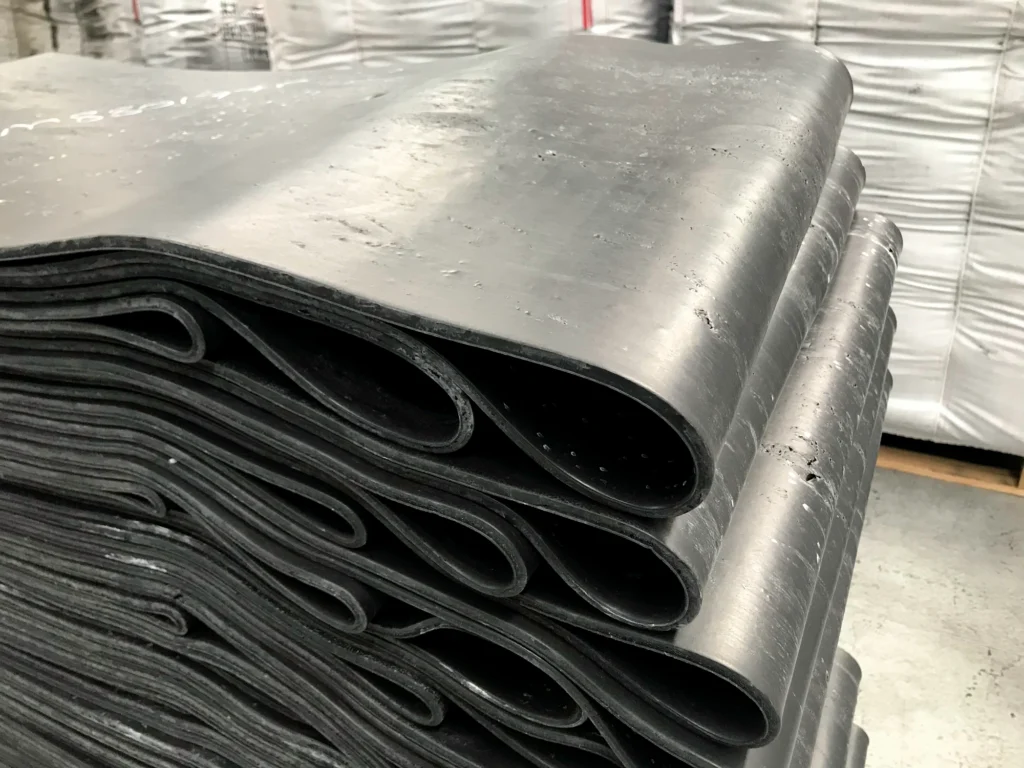
Natural Rubber
Natural rubber is a highly elastic substance obtained from the latex of rubber trees. It possesses excellent stretchability and resilience, making it an ideal core material for bungee cords. Natural rubber is sensitive to temperature changes, UV light, and certain chemicals.
Why is natural rubber used as a material for bungee cords?
- Superior elasticity and tensile strength ensure excellent stretch and recovery, essential for the rebound effect in bungee cords.
- Natural rubber provides a smooth, consistent stretch, ideal for general-purpose bungee applications.
- It’s also biodegradable, making it an environmentally friendly option.
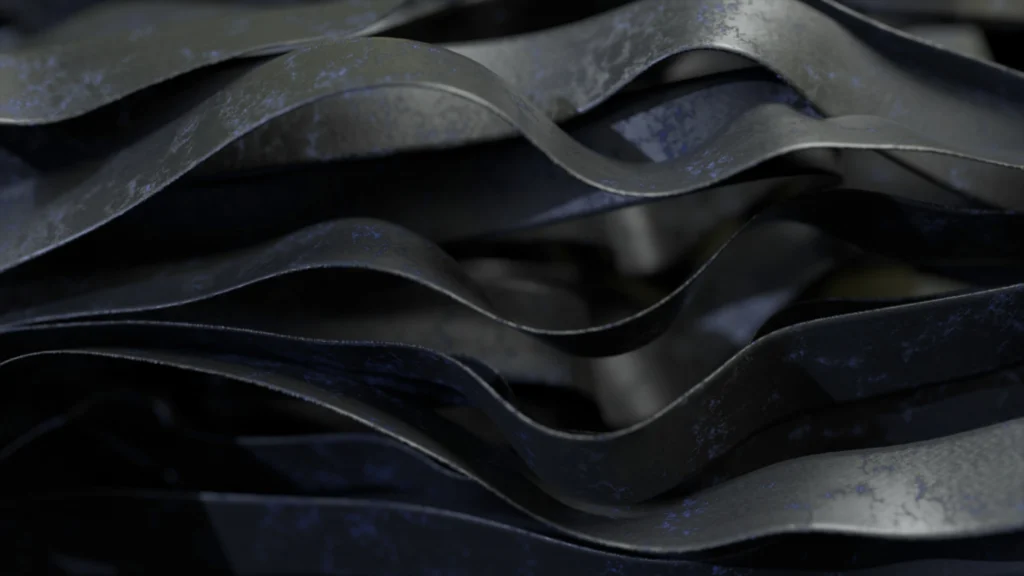
Synthetic Rubber (e.g., Neoprene, EPDM)
Neoprene is a synthetic rubber known for its chemical stability and resistance to weather elements. EPDM (Ethylene Propylene Diene Monomer) is another synthetic rubber, notable for its excellent heat, ozone, and weather resistance. These materials tend to be ess sensitive to environmental factors than natural rubber.
Why Are Synthetic Rubbers Used as Common Bungee Cord Materials?
- Greater durability and longevity, especially in harsh weather conditions.
- Better resistance to UV radiation, ozone, and extreme temperatures, preventing premature degradation.
- Suitable for industrial and marine applications where exposure to harsh conditions is common.
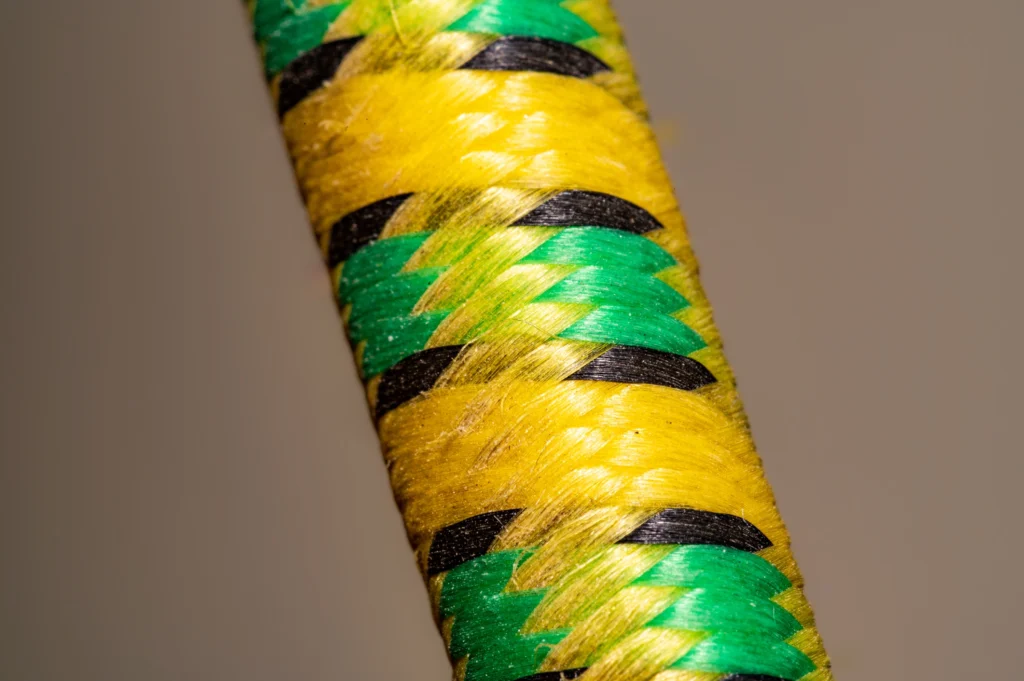
Outer Sheath Materials (e.g., Nylon, Polyester)
Nylon is a synthetic polymer known for its exceptional strength, abrasion resistance, and flexibility. Polyester is another synthetic fibre, valued for its durability, resistance to stretching and shrinking, and its quick-drying properties.
Why Are Nylon and Polyester Used as Materials for Bungee Cords?
- Both materials offer added protection to the elastic core, ensuring consistent performance under various conditions.
- Nylon sheaths provide excellent resistance to abrasion and wear, prolonging the lifespan of the bungee cord.
- Polyester’s resistance to moisture and mildew makes it suitable for outdoor and marine environments.
Choosing Bungee Cords Based on Materials
Being familiar with and understanding bungee cords and the materials that are used to make them will help you to know both the abilities and limitations of their applications.
The right material combination may be able to withstand specific environmental conditions, bear the intended load, and endure the wear and tear that comes with regular usage without compromising safety.
Knowing this will help you to make better decisions in choosing bungee cords when you need them. Whether you’re securing load to a vehicle or trailer, setting up camping gear, or using them for storage around the house, the right bungee cords should be safe to use and durable.
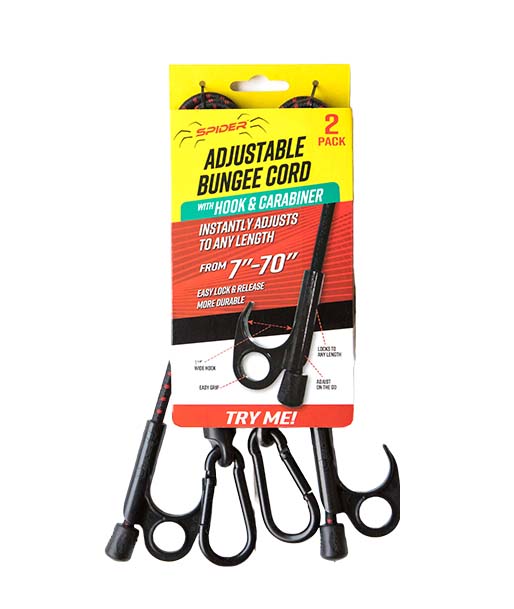
Spider Cords: Bungee Cords Designed with Materials in Mind
Spider Cords have been specially designed to be safe, durable, and easy to use in a wide range of applications. The materials used in their construction ensure they’re strong, durable and able to withstand wear and tear.
Spider Cords are made using a premium latex rubber core and a UV-stabilised nylon braid which makes them up to 10 times more abrasion-resistant than other bungee cords available. The cords also feature the patented Spider-Lock™ hooks made of non-scratch nylon-fibre composite, providing exceptional strength and ease of use.
These features contribute to the Spider Cords’ functionality, strength, and versatility, making them a reliable choice for a broad range of applications.
Learn more about these bungee cords or shop online to find a size or design that will suit you.
Learning how to use bungee cords
Bungee cords, also known as shock cords or occy straps, are stretchable cords made of one or more elastic strands forming a core, usually covered in a woven cotton, polypropylene or nylon sheath. They often have metal or plastic hooks on either end and can be used for a wide variety of purposes, like holding things together or securing loads to trailers, ute trays, or roof racks.
Once you are familiar with how bungee cords work, you can start applying the following steps on how to use them around the house, camping, or while transporting cargo.
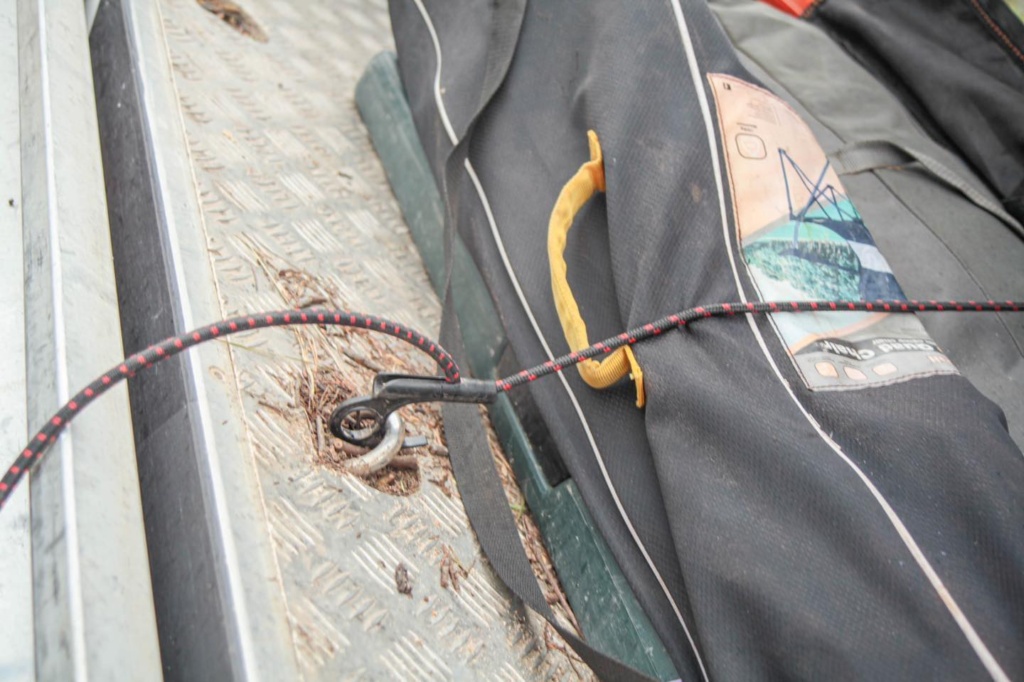
Steps on how to use bungee cords
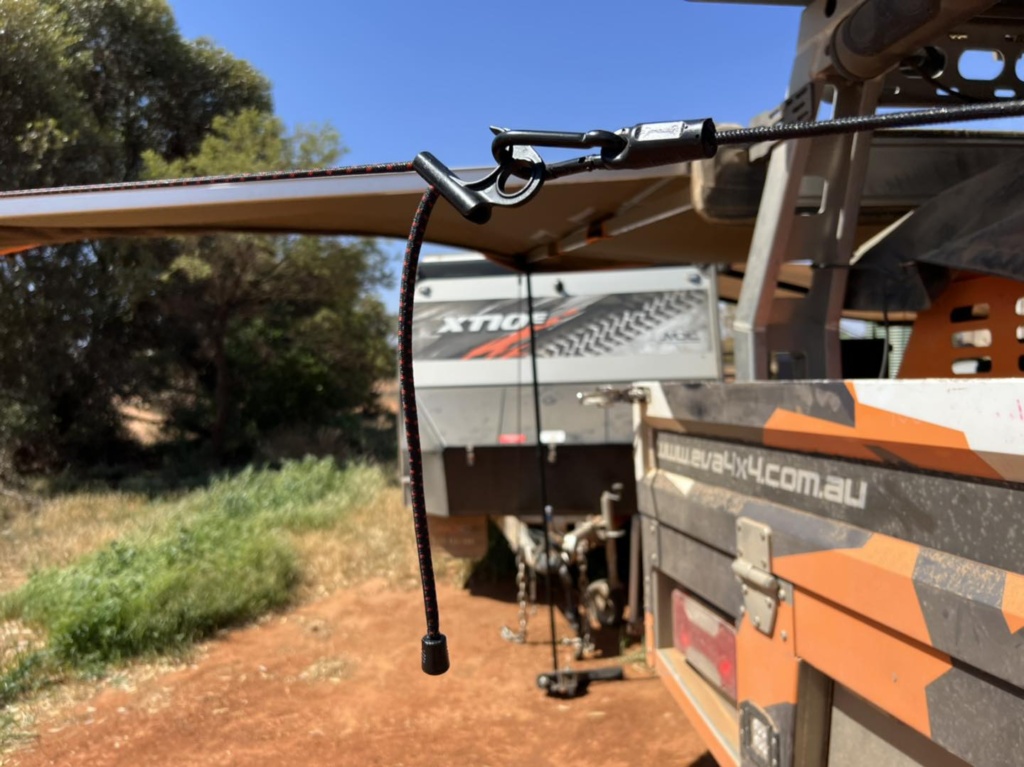
1. Identify the purpose and select the right cord:
Decide what you’re using the bungee cord for. This will determine how you go about the next steps.
Bungee cords come in various lengths and thicknesses. Choose a cord that is the appropriate length, strength and durability for your task. The cord should be slightly shorter than the distance you need to cover to ensure it’s stretched and holds items securely.
2. Inspect the cord:
Before using, always inspect the bungee cord for any signs of wear, damage, or fraying. If it looks compromised, don’t use it.
3. Anchor one end:
Start by hooking or attaching one end of the bungee cord to a secure anchor point. Ensure the hook is securely attached and won’t slip off by gently beginning to apply force.
4. Stretch and secure:
Once one end is secure, you can stretch the bungee cord across or around the item you’re securing. Ensure it’s tight but not overstretched. Hook or attach the other end of the bungee cord to another secure anchor point.
5. Check Tension:
Once both ends are secured, double-check the tension. The cord should be tight and secure, but not overly strained.
For larger or less uniformly shaped items, you might need to use multiple bungee cords. Ensure they’re evenly spaced and share the load equally.
6. Removal:
When you’re ready to remove the bungee cord, carefully unhook one end while ensuring the other end remains anchored. This minimises the risk of the cord snapping back.
If the bungee cord is under high tension, exercise extra caution and consider wearing protective eyewear.
7. Storage:
Store your bungee cords in a cool, dry place. It’s best to hang them up or coil them loosely rather than leave them stretched out. This helps prolong their lifespan and ensure they remain effective.
How to use bungee cords safely
Bungee cords are versatile and incredibly handy tools. While they’re typically safe and easy to use, it’s important to understand how to use them safely to prevent injuries and accidents.
Safety precautions when using bungee cords
If you’ve learned how bungee cords work, you’ll be familiar with the fact that the strength of bungee cords comes from the energy they store when stretched. If bungee cords are released unexpectedly, or if they snap, they will release this stored energy quickly and rebound back with the potential to cause serious injuries.
Because of this, users must practice caution while the cord is stretched and:
- Closely inspect bungee cords before use for any signs of damage like frays
- Stand clear of the potential rebound path
- Wear safety gear, like gloves or eye protection
- Avoid use if the hook is damaged or the cord is frayed
- Avoid over-stretching the cord or using it for heavy loads as typically bungee cords aren’t load-rated
If you’re using a bungee cord with hooks, ensure they’re securely hooked and won’t accidentally unhook. Some bungee cords come with safety closures over the hooks or carabineers— use these if available and appropriate for the task.
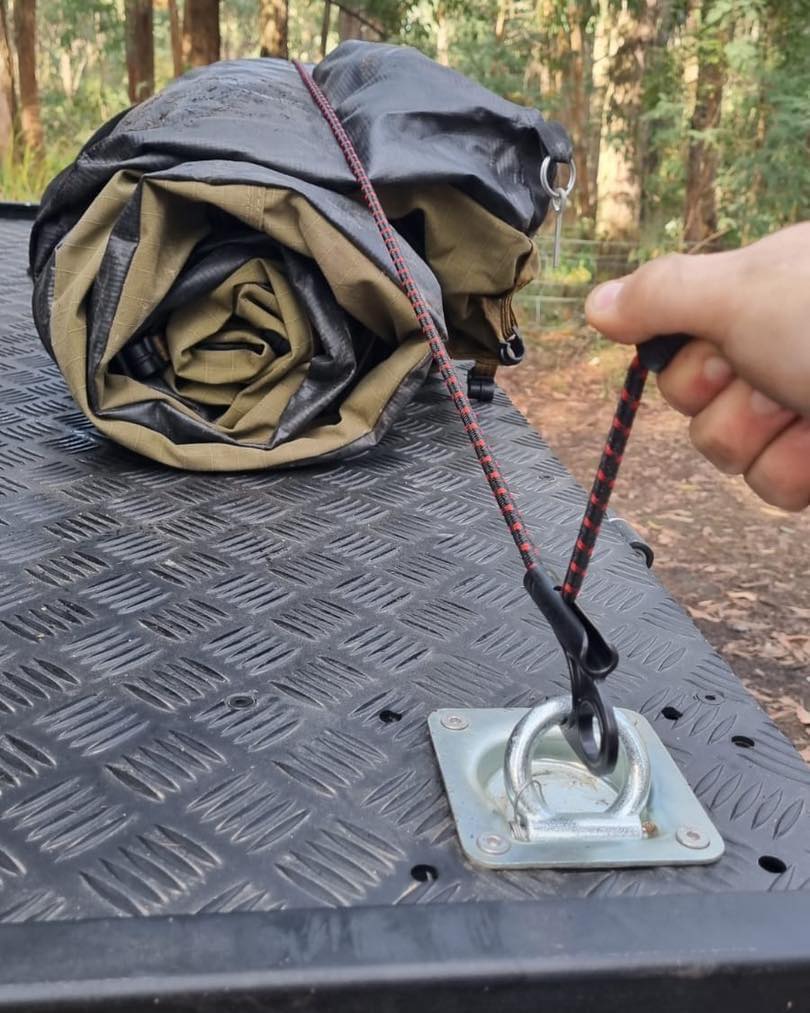
Extra tips for using bungee cords
Once you’re familiar with how to use bungee cords safely, you can begin exploring some more ways to use them. For example:
- Double up for extra strength: If you feel a single bungee cord isn’t providing enough tension, you can twist it or double it up to increase its strength and hold.
- Daisy chain for length: If you need a longer cord, you can daisy chain multiple bungee cords together. This is especially handy with Spider Tarp’s carabiner/hook design.
- Looping technique: For items with no clear attachment point, loop the bungee cord around the object, then hook the bungee back onto itself.
- Tarp securing: Use bungee cords to secure tarps over items that need protection from rain or sun, such as covering a trailer with a tarp. Attach the bungee cord to the tarp’s grommets or D-rings for a tight fit.
- Protect surfaces and the cords: If you’re worried about your bungee cords damaging goods, or sharp edges damaging the bungee cords, you can add padding, like a towel, between the two.
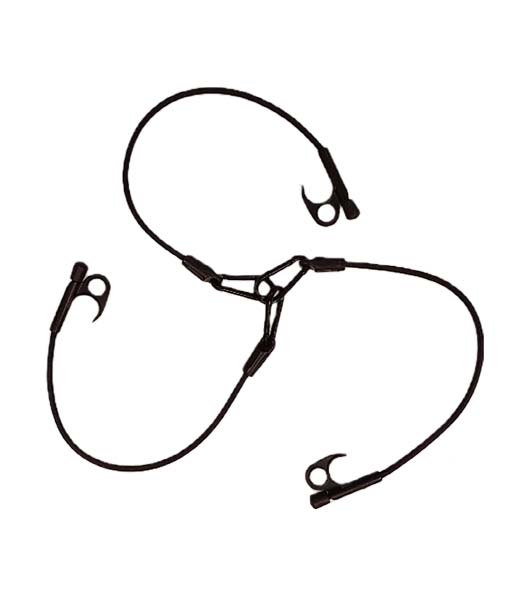
Choosing bungee cords to use
When choosing bungee cords, you’ll want to consider the purpose and application they’ll be used for. Whether it’s for securing loads to a vehicle, or other purposes, choose bungee cords that are up to the task. You should consider:
- Safety features: It’s crucial to prioritise safety. Consider bungee cords that have safety features built into their design to minimize risks.
- Material and durability: Look for cords made from high-quality, durable materials that can withstand wear and tear and offer good elasticity.
- Adjustability: Depending on your needs, adjustable bungee cords might be more suitable as they allow for customization of length and tension.
- Hook design and strength: Ensure the hooks are designed to securely attach without slipping off. They should be robust and capable of handling the weight and tension of the load.
- Ease of use: The cords should be user-friendly, allowing you to secure and release them with ease.
- UV and weather resistance: If you’re going to use the cords outdoors, they should be resistant to the damaging effects of sunlight and adverse weather conditions.
- Versatility: consider cords that can be adapted for various uses, especially if you have diverse needs.
Making it easy to use with Spider-cords™
With an emphasis on safety and functionality, and features like safe grip finger holes, and durability through the tough abrasion-resistant nylon braid and premium latex core, Spider-cord™ provides both longevity and performance.
The strong non-scratch, patented Spider-Lock™ hooks ensure ease of use and adaptability, allowing the bungee cord to be easily and quickly adjusted to the perfect length and tension while attached. Whether you’re securing a load on a weekend adventure or require a versatile tool for everyday tasks, Spider Tarp’s bungee cords fitted with either hooks at either end or hook and carabiner offer you a great choice.
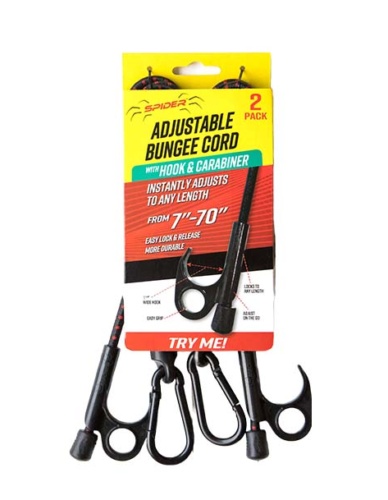
What is a Bungee Cord?
A bungee cord or occy strap is a stretchy rope made from one or more elastic strands forming a core, usually covered in a woven cotton, polypropylene or nylon sheath. These cords are renowned for their ability to absorb shock, thanks to the elasticity of the material.
Bungee cords are commonly used to secure objects without tying knots and to absorb shock. With hooks on each end, they can be looped around items and hooked onto themselves for a firm grip. They’re particularly useful for securing loads on vehicles, like utes, trucks, or trailers, where the load may move due to road vibration or wind resistance.
One of the main advantages of bungee cords is that they can be adjusted to suit the size and shape of the load. This makes them a handy tool for various applications, from everyday household use to professional trades and outdoor adventures.
How Bungee Cords Work
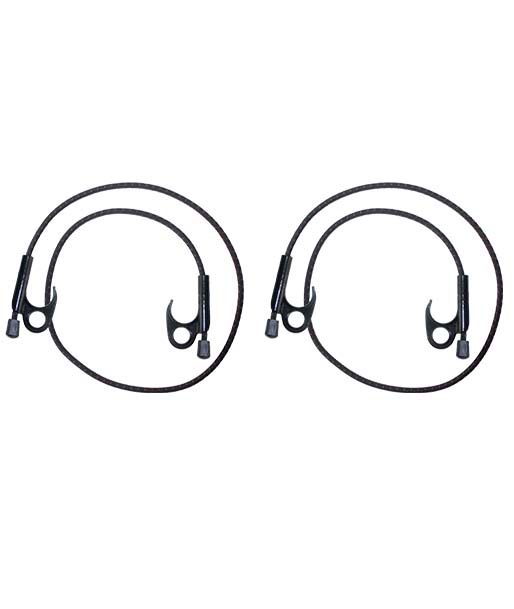
Explanation of How a Bungee Cord Works
Bungee cords work based on the principles of potential and kinetic energy.
- When a bungee cord is stretched, it stores potential energy. Similar to when you pull back on a slingshot – you’re putting energy into the system. In the case of the bungee cord, the energy comes from the effort you put into stretching it. This energy is then stored in the cord, waiting to be released.
- When the tension on the bungee cord is released, the stored potential energy converts into kinetic energy, which is the energy of motion. The cord reverts back to its original length, releasing the stored energy.
This ability to store and release energy is what makes bungee cords so effective at securing loads. When you stretch a bungee cord around an object and hook it in place, the cord’s tension creates a firm hold on the object, preventing it from moving. The elasticity of the cord also allows it to absorb shocks and vibrations, ensuring the load remains secure under changing conditions.
In the case of Spider Tarp’s bungee cords, Spider Cords, they have an additional feature – the patented Spider-Lock™ hook, which allows the length of the cord to be quickly and easily adjusted and locked in place. This feature enhances the versatility of the bungee cord, allowing a single Spider Cord to securely hold loads of different shapes and sizes.
Materials that make bungee cords work
At the core of a bungee cord, you’ll find strands of elastic material, usually rubber, which give the cord its stretchiness. This elasticity allows the cord to absorb shocks and firmly hold items in place. The rubber strands are capable of being stretched and then returning to their original shape, thanks to the molecular structure of rubber.
Covering these rubber strands is a woven sheath, typically made from polypropylene, cotton or a tough, wear-resistant material like nylon that is used on all Spider-Cords™. This outer layer protects the inner rubber strands from damage and wear, while also providing a grip for users.
Bungee cords usually have metal or plastic hooks attached at each end, which are used to secure the cord once it’s stretched around an object. These hooks can come in various shapes and sizes, depending on the specific use of the bungee cord.
Size and strength of bungee cords
Bungee cords come in various lengths and thicknesses, and the right size depends on what you’re using it for. Shorter bungee cords can be perfect for bundling small items, while longer cords can wrap around larger objects or span bigger distances.
As for thickness, thicker cords can be ideal for heavier-duty tasks however the elasticity and density of the bungee cord core material and the properties of the outer sheath are the primary determinants of strength and durability. A thinner, high-density core bungee cord can be far stronger than a thicker cord.
A bungee cord that works for you should be chosen so that it is capable of holding the weight of the load. Overstretching a bungee cord can lead to the cord breaking which can be dangerous. Generally, a safe working load is achieved at ⅔ or less of the fully extended cord. It is worth noting that you should always ensure that you never stand in in the direct rebound path of a tensioned bungee cord.
Ways to Take Advantage of How Bungee Cords Work
Because of the adaptable nature of how bungee cords work, they’re able to be used in a wide range of situations.
Securing Loads on Vehicles
This is one of the most common uses of bungee cords. They can be used to secure loads on the back of a ute, truck, or trailer, ensuring that items don’t move or fall off during transport. If you’re moving large items like mattresses or furniture, bungee cords can help secure these items to your vehicle.
Bungee cords are very useful in boating to secure equipment and prevent it from being lost overboard.
Camping and Outdoor Activities
Bungee cords are a camper’s best friend. They can be used to secure a tent to its pegs, attach camping gear to a backpack, or tie down items on a roof rack.
Bungee cords can be used in various DIY projects, such as creating a custom car roof rack or building a bike storage solution.
Gardening and Around Home
Bungee cords can be used to secure tarps over areas that need protection from weather or pests. Similar to when you want to cover a trailer with a tarp. They can also help bundle and carry branches or other yard waste.
Organising and Storing Items
In homes or workshops, bungee cords can be used to secure items in place, such as tools on a pegboard or sports equipment in a garage.
How Spider Tarp’s Spider Cord™ Works
Spider Tarp’s patented Spider-Cord™ is a versatile, premium high-density rubber cor, nylon sheath adjustable bungee cord designed to replace the need for multiple fixed-length bungee cords or occy straps. The aim is to offer a one-size-fits-all solution to securing loads, which is more convenient and cost-effective.
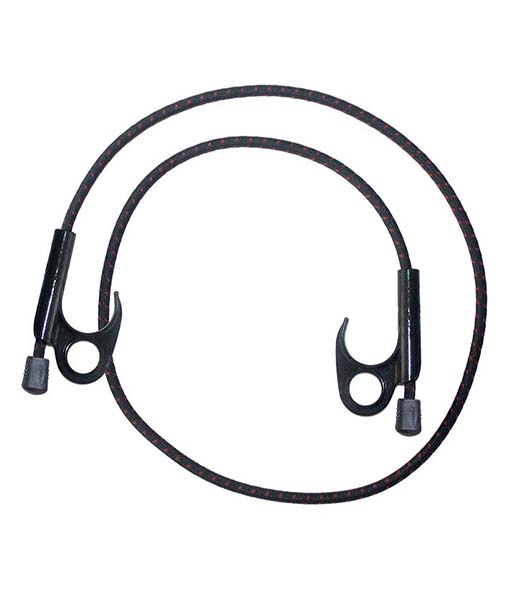
Spider-Cord™ with Hooks
This version has an adjustable Spider-Lock™ hook on each end. The easy grip hooks can be quickly and easily engaged, tensioned, and released anywhere along the attachment cord.
The unique design allows the bungee cord to be tensioned even when the cord is attached, always ensuring a perfect fit no matter the size of your load. It eliminates the need for multiple fixed-length bungee cords, making it a value-for-money solution.
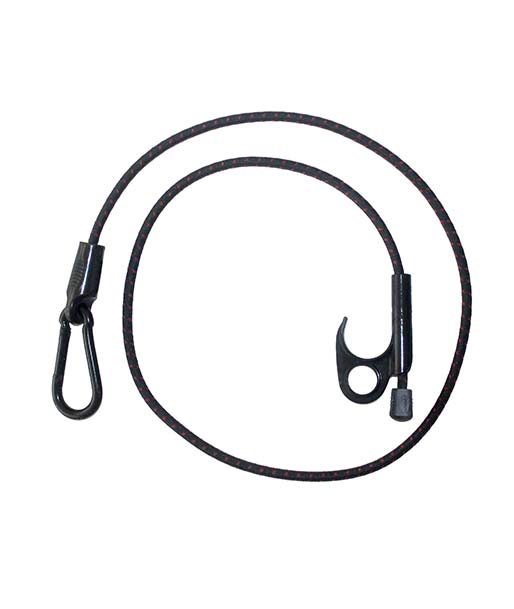
Spider-Cord™ with Carabiner
This version has an adjustable Spider-Lock™ hook on one end and a heavy-duty carabiner on the other.
It’s ideal for situations where a semi-permanent closed connection is needed. The carabiner can easily attach to tarp D-Rings, eyelets, or even another Spider-Cord™ with Carabiner, allowing for extended length. By attaching it to the Spider-Lock™ hook’s Easy-Grip finger hole, you can also create an adjustable bungee cord loop.
With these features, Spider-Cord™ bungee cords provide a versatile and adjustable solution for securing loads. Whether you’re camping, transporting goods, or need a quick and secure attachment solution, Spider Tarp’s Spider-Cord™ makes the job a breeze and expands the possibilities for using bungee cords.
Figuring out how to clean a tarp first starts with determining what material your tarp is made of, then following a short set of steps to clean it. Tarps, short for tarpaulins, are versatile and durable covers used to protect a range of items from outdoor elements such as rain, sun, and wind. But, even though they’re used to keep your belongings clean and safe from the elements, sometimes they need a good clean too.
Regardless of the material of the tarp you have, it’s important to keep it clean and well-maintained. This will help it last as long as possible and perform its best.
Cleaning different materials of tarps
Tarps are made from a wide variety of materials. Each of which has a different purpose. Some of the most common materials of tarps include canvas, polyethylene, vinyl, and mesh.
Spider Tarp offers a range of tarps in trailer covers, ute covers, and truck covers, made from different materials, each with its own unique benefits. Our tarps are made from tough, rip-resistant materials such as waterproof polyethylene (PE) coated fabrics for general domestic use, and heavyweight 600gsm (18oz) waterproof vinyl (PVC) coated fabrics featuring 50mm (2”) edge webbing for trade and industrial applications.
Will the type of material affect how to clean a tarp?
The type of material used in a tarp can change the cleaning process. For example, vinyl tarps are more durable and resistant to water, but they can be more challenging to clean than polyethylene tarps. Meanwhile, mesh tarps are breathable, making them great for airflow, but they can also collect debris more easily.
Depending on the type of material you use, you may want to supply different equipment or use different cleaning methods. The below method on how to clean a tarp is an outline, that will be applicable to most common materials tarps are made of.
What you'll need to clean your tarp
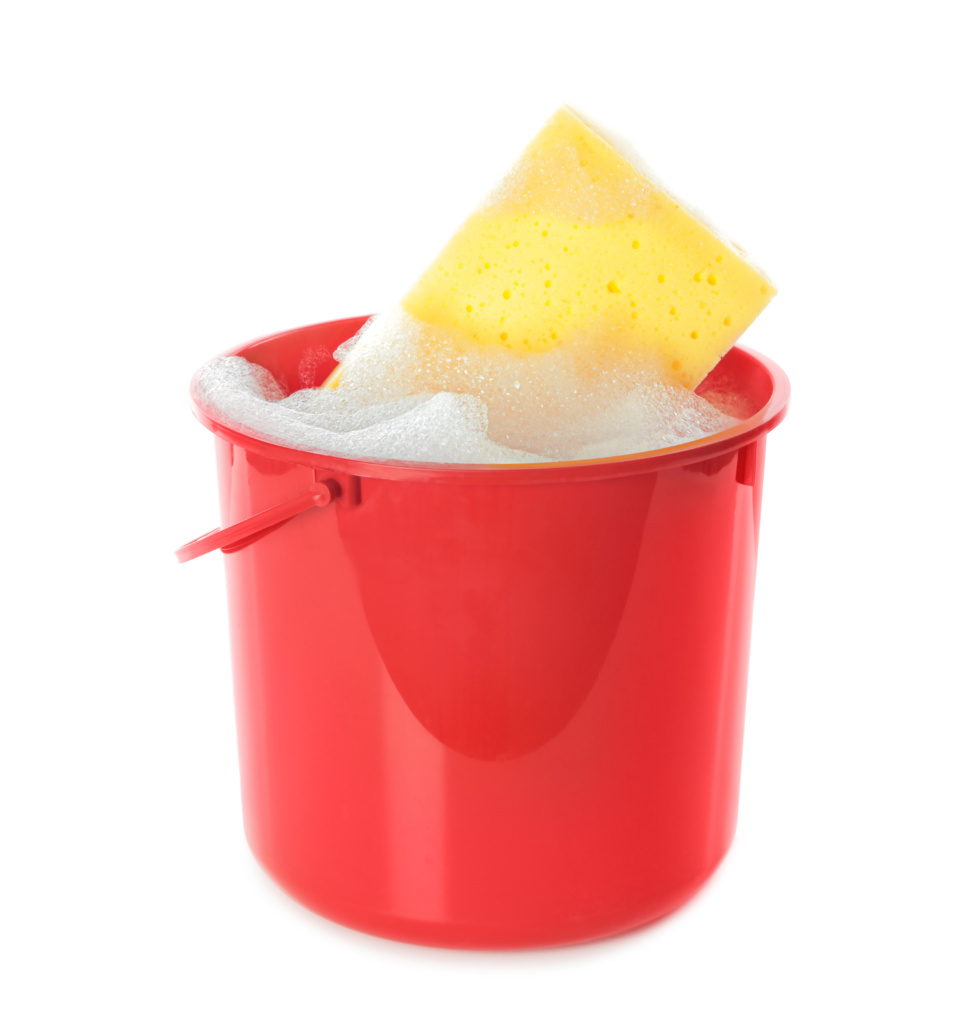
Materials needed to clean a tarp
Before learning how to clean a tarp, it’s time to grab your supplies. Some helpful tools to help you clean a tarp include:
- A soft-bristled brush or sponge
- Mild soap or detergent
- A hose (and water source) or bucket of water
- A clean towel or rag for drying
- A small brush to clean hook straps if needed (a toothbrush would work well)
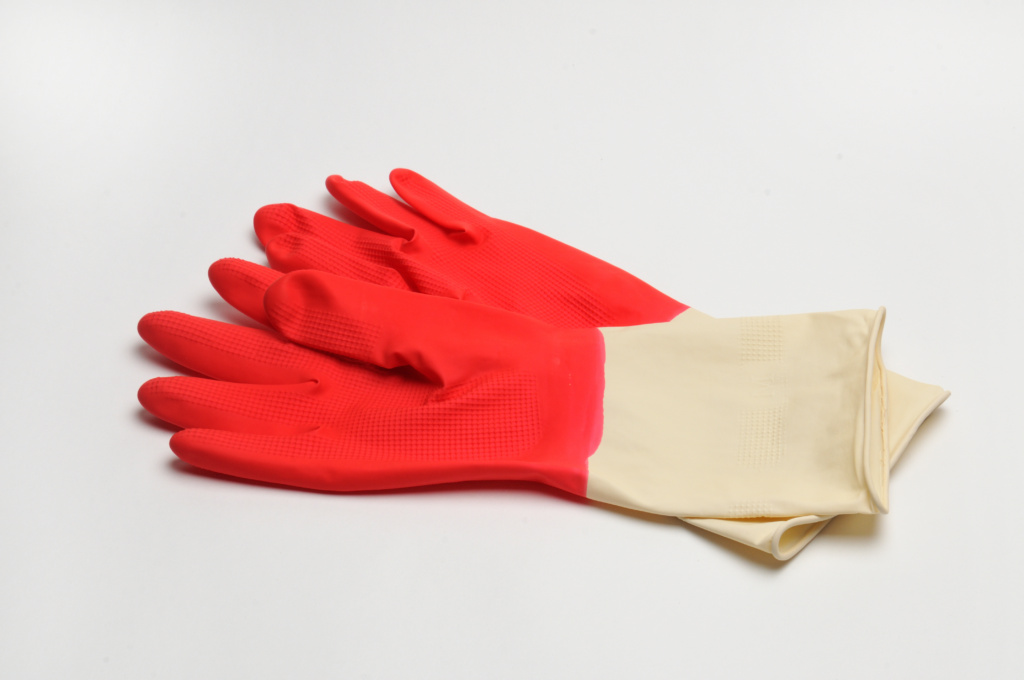
Safety precautions
And of course, it’s important to take safety precautions to avoid injury to yourself or damage to your tarp.
- Wear protective gloves and eyewear to prevent any chemicals or debris from getting into your eyes or skin.
- Avoid using abrasive cleaners or brushes that can damage the tarp’s surface.
Remember, even some cleaning materials recommended to clean tarps can be harmful to your eyes or skin. So it’s always best to be cautious and use safety precautions.
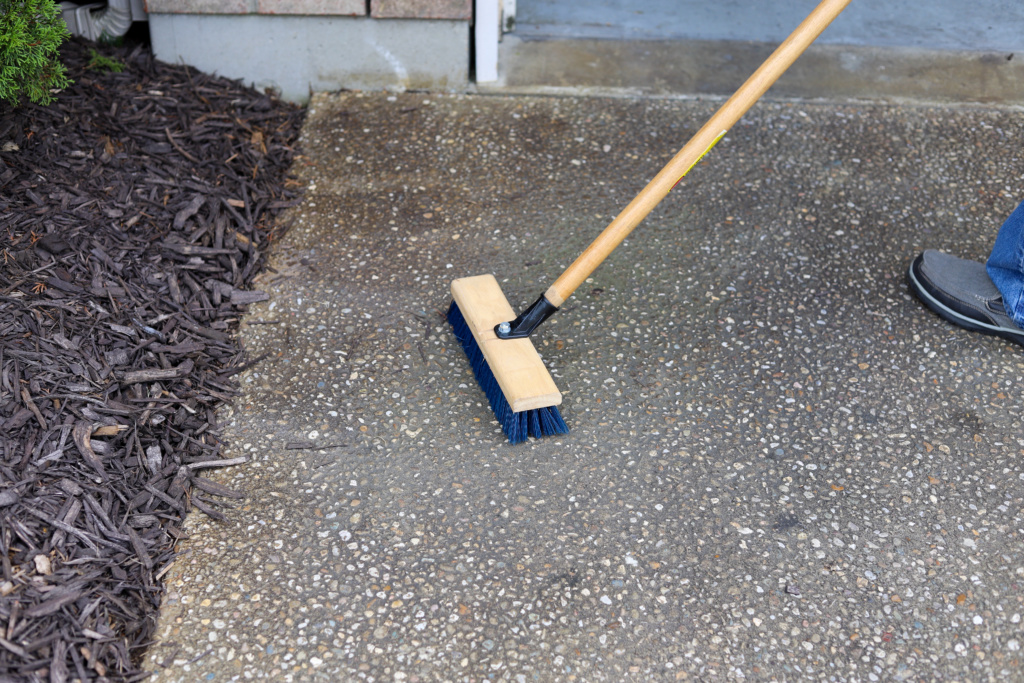
Choosing a location
You will also need to choose where you’re going to clean your tarp. An open, flat space with good drainage is ideal.
- If you’re cleaning your tarp on a sensitive surface, you may want to lay down some old cardboard, plastics, or trays to protect it from any chemicals you use.
- Ensure your cleaning solution doesn’t harm nearby plants or grass.
Clean your tarp on a hard surface such as a driveway or patio to make cleanup easier.
Steps on how to clean a tarp
Cleaning your tarp is a straightforward process that can be accomplished with a few simple steps:
- Lay the tarp flat on a clean, flat surface.
- Use a soft-bristled brush or sponge to remove any loose dirt or debris from the tarp.
- Mix a mild soap or detergent with water in a bucket or spray bottle.
- Apply the cleaning solution to the tarp, working in small sections from one end to the other.
- Use a soft-bristled brush or sponge to scrub the tarp gently, paying extra attention to any stains or spots.
- Rinse the tarp thoroughly with a hose or bucket of clean water to remove all traces of soap.
- Use a clean towel or rag to dry the tarp completely, making sure to remove any excess water.
Alternate cleaning methods
Different types of stains may require different cleaning methods. For example, grease or oil stains can be removed with a degreaser or a mixture of baking soda and vinegar. For mould or mildew, a mixture of bleach and water can be used.
Always test any cleaning solution on a small, inconspicuous area of the tarp before applying it to the entire surface.
If your tarp or trailer cover has hook straps or bungee cords, you can clean them with a small brush (like a toothbrush) to remove debris such as sand. Rinsing with fresh water may also help.
Drying a tarp after cleaning
It’s important to properly dry your tarp after cleaning to prevent mould or mildew growth. Hang the tarp over a clothesline or lay it flat on a clean surface to air-dry completely before folding or storing.
Keeping your tarp clean
Proper maintenance of your tarp can help keep it clean for longer and extend its life. Here are a few tips for maintaining your tarp:
- Regularly clean your tarp as outlined in the previous section.
- Avoid storing your tarp when it is wet or damp, as this can cause mould or mildew growth.
- If possible, store your tarp in a cool, dry place out of direct sunlight.
- Inspect your tarp regularly for signs of wear and tear, such as holes or frayed edges.
- Patch any holes or tears immediately to prevent further damage.
- Use caution when folding or storing your tarp to avoid creases or folds that can weaken the material.
Storing your tarp after cleaning
When it’s time to store your tarp, fold it neatly and place it in a dry, cool place out of direct sunlight. Avoid folding your tarp in the same place every time, as this can cause creases that weaken the material over time. For long-term storage, consider using a plastic storage container to protect your tarp from moisture and pests.
Checking for signs of wear and tear
Regularly checking your tarp for signs of wear and tear can help prevent future damage or risk. If your tarp is heavily damaged, it may be time to replace it. Signs it may be time to replace your tarp include:
- holes
- tears
- severe fading
By regularly inspecting and maintaining your tarp, you can extend its lifespan and save money in the long run.
Final thoughts on how to clean a tarp
Tarps are a handy tool for protecting your valuables from the elements. But even though they protect what they cover from the elements, occasionally tarps will need some TLC too.
Gather the necessary supplies, take safety precautions, and choose the right spot to clean your tarp. Follow the steps provided, and if you find stubborn stains or dirt, try using the tips mentioned above to remove them.
Cleaning your tarp regularly can help keep it in its best condition and prevent damage. By doing so, you can protect your valuables and save money in the long run by avoiding costly repairs or replacements.
For more tips on tarps and covers for utes, covers for trailers, or covers for trucks, check out our latest resources and news.
The material tarps are made of can depend on their use and origin. Most commonly, tarps can be made from a variety of materials, including polyethylene, canvas and vinyl. Each tarp material has its own advantages and disadvantages, and it’s important to understand the properties of each before making a decision.
Tarps have been around for centuries and have been used for a variety of purposes, from protecting outdoor equipment to providing temporary shelter. With so many different types of tarps available on the market, it can be tough to figure out which one is best for your needs and why.
The backstory of tarps and what materials they're made of
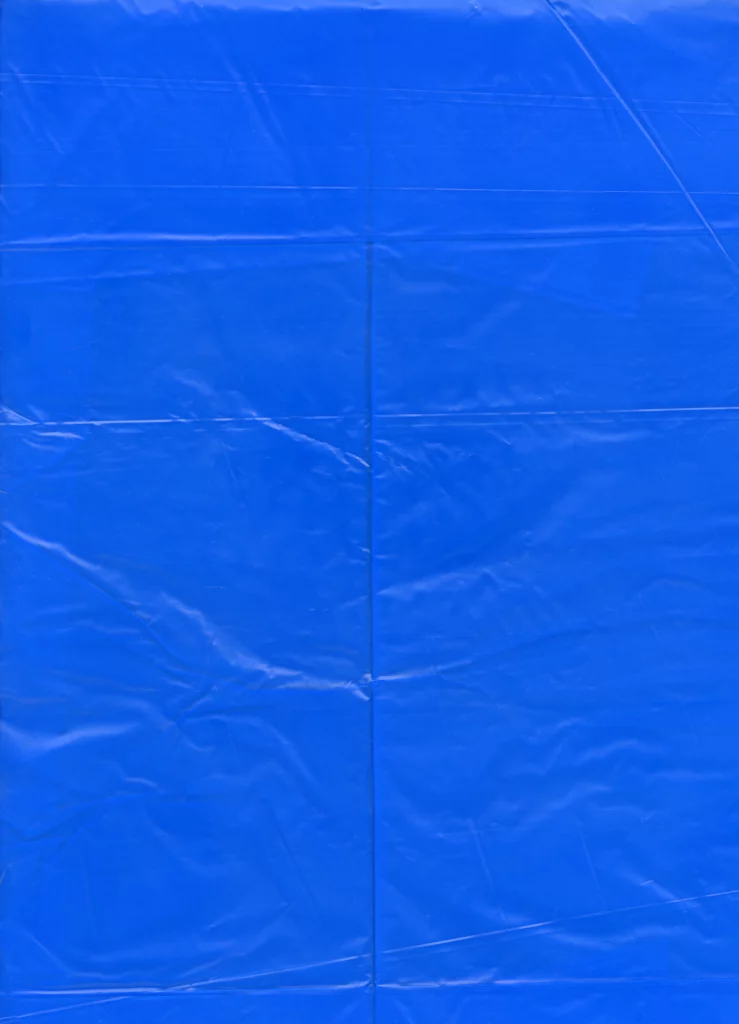
The first material tarps may have been made of
The use of tarps can be traced back to ancient times when nomadic people used animal hides to cover their shelters and protect their belongings from the elements. Tarps as we know them today likely evolved from these early forms of shelter and protection.
More recently, in the late 19th and early 20th centuries, tarps were primarily made from canvas, a heavy-duty and durable material that was ideal as the use of tarps grew with industries such as construction, agriculture, and transportation expanded and needed reliable, low-cost solutions for protecting their equipment and materials
How the material tarps are made of changed
Then, in the mid-20th century, the advent of new synthetic materials such as polyethylene (PE) and polyvinyl chloride (PVC) led to the development of lighter and more affordable tarps. These new materials offered improved resistance to water, UV light, and other elements, making them ideal for a wide range of outdoor uses.
Today, because they’re more versatile and affordable than ever, tarps continue to be an essential tool in a variety of households and industries. And, with new advances in materials and manufacturing techniques leading to ever-more specialised tarps for specific uses and applications, such as ute tray covers, tarps are going to be a staple for a long time to come.
What material are tarps made of? Common materials used in tarps
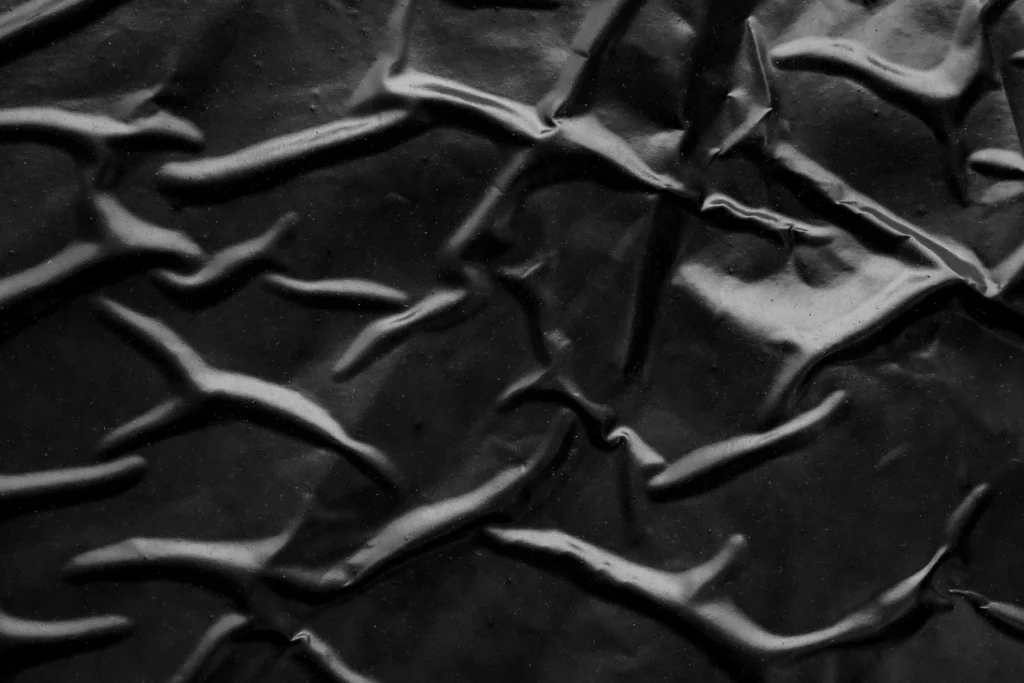
Polyethylene (PE)
Polyethylene (PE) is a thermoplastic polymer made from the monomer ethylene . It is a versatile and widely used material that is commonly found in many consumer and industrial products such as:
- Plastic bags, films, and packaging materials
- Food storage containers
- Water bottles
- Automotive parts
- Wires and cables
PE tarps are made from High-Density Polyethylene (HDPE) which is applied as lamination to each side of a fabric scrim. PE tarp edges are typically heat-sealed or “welded” and often contain a synthetic cord in the hem to improve edge stiffness.
Advantages of this material of tarp
Polyethylene is one of the most commonly used materials for tarps because it is affordable, lightweight, and durable. This makes PE tarps ideal for a variety of outdoor applications, from covering outdoor equipment to providing temporary shelter.
Disadvantages of this material of tarp
One of the disadvantages of polyethylene tarps is that they are not very breathable, which means that moisture can build up underneath the tarp. Additionally, polyethylene tarps tend to be lighter in weight and are more prone to tearing, which makes them less suitable for repetitive heavy-duty applications.
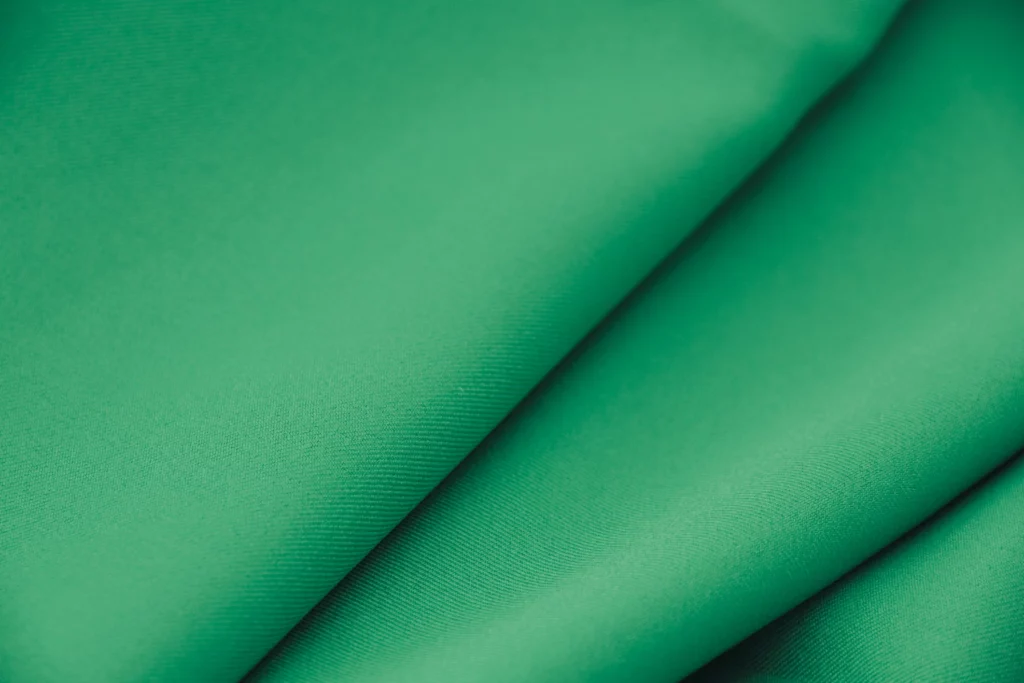
Canvas
Canvas is a durable and heavy-duty material that is commonly used in the manufacture of tarps. It is made from cotton or synthetic fibres that are woven into a tightly woven fabric. The tight weave of canvas makes it naturally water-resistant, while its breathable nature allows it to prevent condensation buildup. Canvas is commonly used in products like:
- Tents and camping gear
- Backpacks and duffel bags
- Sail covers, boat covers, and boat tarps
Advantages of this material of tarp
Canvas tarps are known for their durability, breathability, and water resistance. This makes them ideal for outdoor applications where protection from the elements is important. Additionally, canvas tarps are known for their long-lasting qualities, which makes them a good investment for those who use tarps frequently.
Disadvantages of this material of tarp
One of the main disadvantages of canvas tarps is their weight. Canvas tarps are much heavier than PE and PVC tarps, which makes them less suitable for applications where portability is important. Additionally, canvas tarps are more expensive than PE and PVC tarps, which can make them less accessible to some consumers and can be prone to mould if not dried correctly.

Vinyl
Vinyl is a synthetic polymer made from polyvinyl chloride (PVC) resin. It is a versatile and durable material that is often used in making tarps, but it’s also used in the making of rainwear, pool covers, and even home flooring.
PVC tarps are made by spreading a thin layer of PVC on each side of a synthetic scrim. The strength of the tarp is dependent on the thickness of the PVC layer and the density of the scrim. PVC tarp edges can be heat sealed in similar manner to PE tarps, but can also be sewn directly or with webbing for additional strength and durability.
Advantages of this material of tarp
Vinyl tarps are known for their waterproof qualities, making them ideal for applications where protection from the elements is essential. Additionally, vinyl tarps are durable and easy to clean, making them a good choice for those who use tarps frequently.
Disadvantages of this material of tarp
Like PE tarps, solid vinyl tarps are not breathable, which can lead to moisture buildup underneath the tarp. Additionally, vinyl tarps can become brittle over time if not properly treated with UV protection, especially in extreme weather conditions.
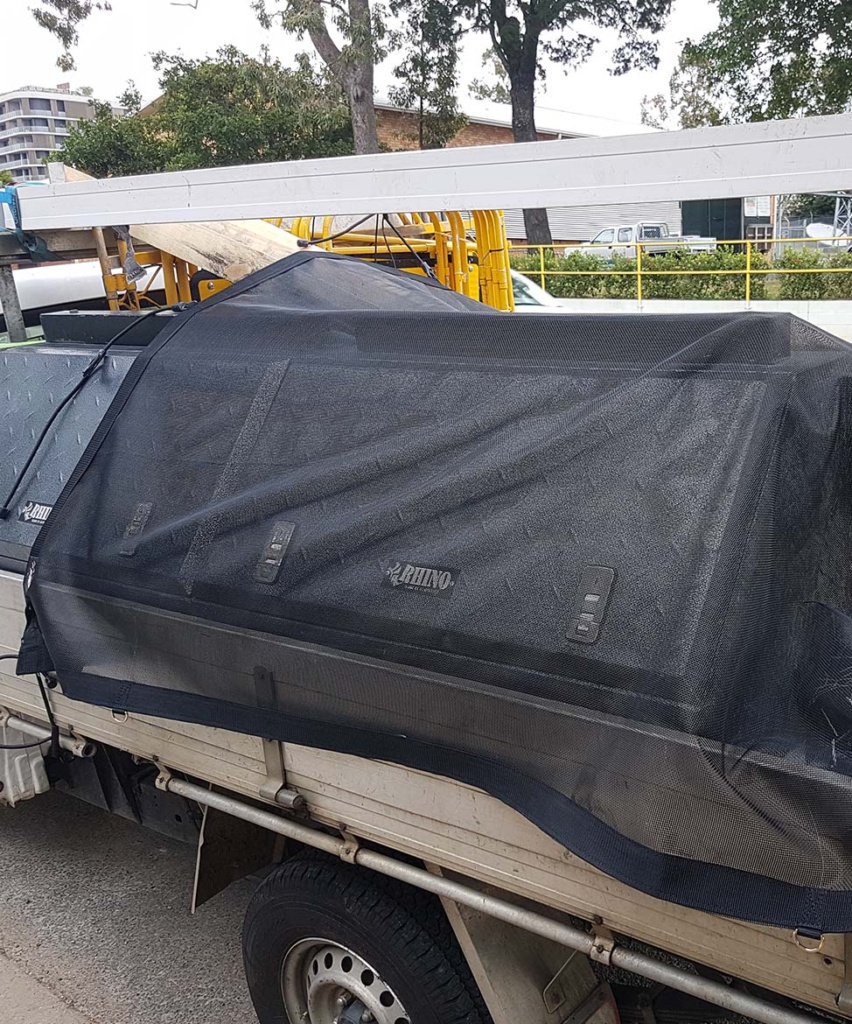
Other materials and construction (e.g. mesh, cotton, etc.)
There are many other materials used in tarps such as cotton and synthetic fabrics. Each material has its own advantages and disadvantages, and it’s important to consider these when choosing a tarp.
Mesh tarps are made from similar materials to solid tarps however they differ in being constructed from woven threads. These tarps are relatively lightweight, flexible and breathable, making them ideal for outdoor applications, particularly involving light diffusion and where wind may be an issue. On the other hand, cotton tarps are durable and water-resistant, but they can be heavy and expensive. It’s important to consider your specific needs and the type of application you will be using the tarp for when making your decision.
Choosing material tarps for you
Choosing the best material for a tarp depends on the specific needs and requirements of the user. While canvas is known for its heavy-duty and durable nature, polyethylene is a versatile and widely used material that offers relatively low cost, durability and weather resistance. For repetitive heavier-use trade and industrial applications, vinyl may be more appropriate.
Spider Tarp Australian Tarps
To learn more about the best material for your specific needs, take a look at the available Spider Tarp covers and Spider Tarp cords for more information. Spider Tarp uses a range of high-quality materials including UV-treated polyethylene (PE) and vinyl (PVC), coated fabrics to manufacture their waterproof covers and heavy-duty mesh cargo nets. Each tarp material is chosen for its durability and functionality, and application.
With a wide range to suit all budgets and needs, Spider Tarp offers a variety of options for all your load cover requirements. Take a look at the shop to learn more about each individual product, or contact us to learn more.
Transporting goods and materials in trailers can be tricky, but trailer covers make it a lot easier. Hook straps for trailer covers help to secure both the cover and the load, ensuring your trailer is safe.
What are hook straps for trailer covers?
Hook straps are a type of tie-down or fastening strap that feature hooks on either end.
Hook straps, also known as tarp straps, are commonly used in combination with tarp trailer covers to protect the load from the elements and keep it secure during transit, serving a big part in the backbone of trailer cover security.
A simple but effective design, these straps provide an effective mechanism for attaching the cover to a trailer by creating an adjustable fastening system that keeps it firmly in place. By doing so, they help trailer covers stay in place, preventing flapping and tearing while travelling.
As well as preventing any damage to the trailer cover itself, by holding everything in place, the load is also more secure, helping to prevent trailer loads from shifting, falling off, or getting damaged.
How do hook straps work?
Hook straps need to be a balance of both flexibility and durability. A little bit of give is necessary to prevent them from snapping, but strength is needed to hold a trailer cover and everything else in place.
Because of this, hook straps for trailer covers are typically made of durable and flexible materials, such as rubber, polypropylene, or nylon, and come in various lengths and widths to accommodate different load sizes and types of vehicles.
The hooks on either end of the strap can be attached to the vehicle frame or other secure points, while the strap itself is tightened to secure the load.
How to use hook straps
While simple in design, hook straps are efficiently and securely fastening your loads. Here’s a basic guide on how to use them:
Inspect the Strap: Before using any hook strap, always inspect it for signs of wear, damage, or fraying. It’s essential to ensure the strap is in good condition to maintain optimal safety.
Position the Load: Make sure the item or cover you’re securing is positioned correctly. This ensures a snug fit once the strap is tightened.
Hook One End: Start by attaching one end of the strap to a secure point on your vehicle, trailer, or item. This could be a designated loop, an eyelet, or any sturdy anchor point.
Stretch and Secure: Pull the strap across the item or cover you’re securing. Ensure it’s taut, but not over-stretched, to avoid damaging the strap or the item.
Hook the Other End: Attach the other end of the hook strap to another secure point, ensuring it maintains tension across the load.
Check Tension: Press down slightly on the secured item or cover. There should be minimal movement, indicating that the hook strap is doing its job. If there’s too much slack, you might need to readjust the strap for a tighter fit.
Safety First: Never overload or overstretch the strap beyond its capacity. Always refer to the manufacturer’s guidelines regarding weight limits and optimal usage conditions.
Types of hook straps for trailer covers
Ratchet Straps
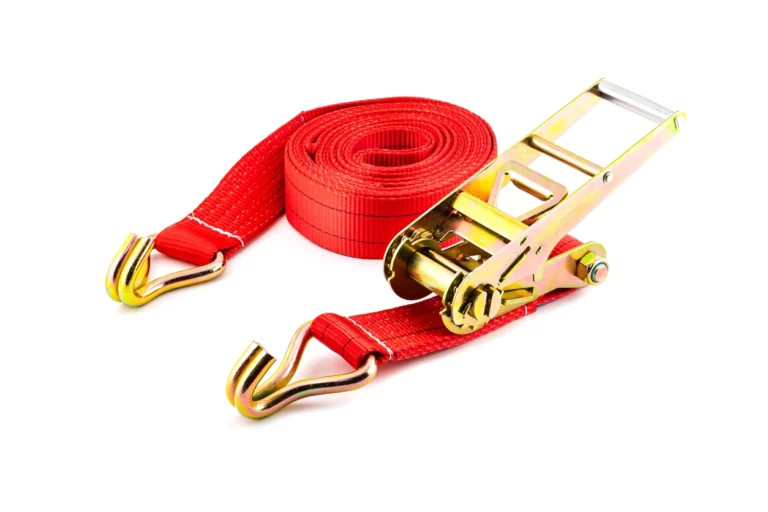
These are one of the most commonly used types of straps in Australia, especially when used to secure heavy loads. They feature a ratchet mechanism that allows users to tighten the strap to the desired tension, ensuring a secure hold.
Cam buckle straps
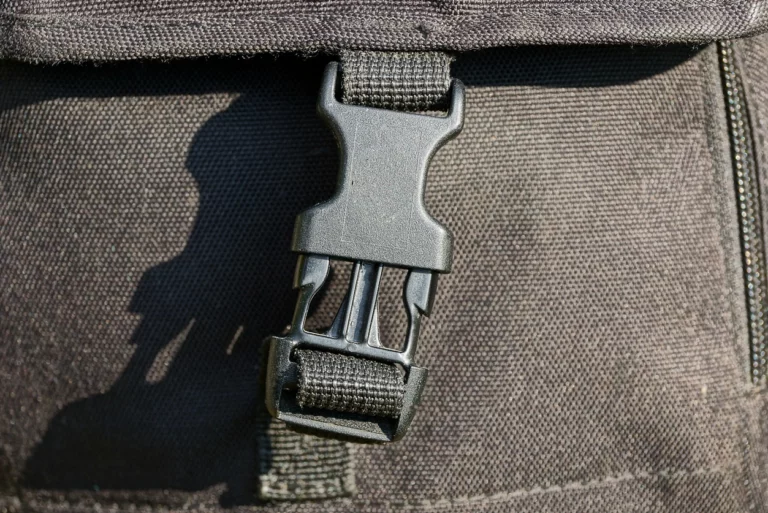
Cam buckle straps are another popular option, featuring a cam-style buckle that allows you to easily adjust the tension of the strap.
S-hook straps
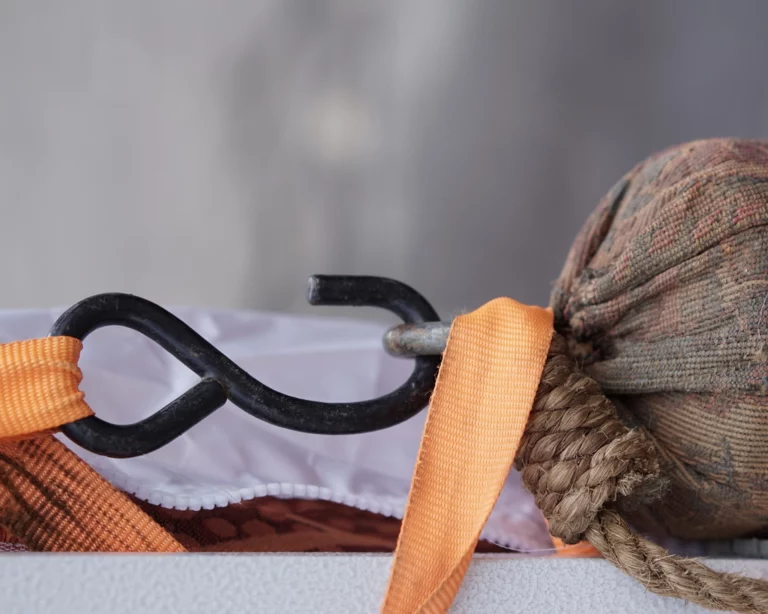
S-hook straps are a simple, cost-effective option that features hooks at either end of the strap. They are easy to use and ideal for quickly securing lighter loads.
Benefits of using hook straps for trailer covers
Increased security
Tarp straps help to keep the cover or tarp securely in place during transit, preventing it from shifting or coming loose and exposing the load to the elements.
Protection of the trailer and load
Using trailer covers with hook straps can help protect the load from weather, dust, and other elements that could damage it during transit.
Increased efficiency
Lorem ipsum dolor sit amet, consectetur adipiscing elit. Ut elit tellus, luctus nec ullamcorper mattis, pulvinar dapibus leo.
Improved safety
Tarp straps make it easier to secure the cover or tarp to the trailer, allowing you to load and unload faster and more efficiently.
Improved safety
By keeping the load secure during transit, tarp straps can help to prevent accidents and spills that could result in damage or injury.
How to choose the right hook straps for trailer covers
Load weight and size
The weight and size of both the trailer and the load will determine the type and size of the tarp strap that you need. Make sure to choose straps that are rated for the weight of your load to ensure that they can handle the load safely.
Type of trailer
Consider the type of trailer you will be using the tarp straps on. Some trailers have specific attachment points, so make sure to choose straps that are compatible with your trailer.
Material quality
Look for tarp straps that are made of high-quality, durable materials, such as heavy-duty rubber or polypropylene, to ensure that they can handle the weight of the load and withstand the elements during transit.
Length and width
Consider the length and width of the straps you need. Choose straps that are long enough to reach from one attachment point to another, but not so long that they will get tangled or become a tripping hazard.
Breaking strength
Breaking strength refers to the amount of weight the strap can hold before breaking. Make sure to choose straps with a breaking strength that is greater than the weight of the load to ensure maximum safety.
Not sure how to choose the hook straps and trailer covers?
Hook straps for trailer covers are essential for securing loads to trailers and preventing them from shifting, falling off, or getting damaged during transit. To figure out the right hook straps for trailer covers, consider the weight and size of the load, as well as your trailer, and then decide which material and size are most suitable for it.
Spider Tarp
If you’re looking for flexible, fast, and easy-to-use hook strap and trailer cover solutions, check out Spider Tarp’s range of trailer covers.
With eight easily adjustable premium rubber core and abrasion-resistant nylon braid attachment cords and Spider-Lock™ hooks permanently fitted on each corner and midway along each edge, these covers provide ample securing points for covering your load. For extra security, consider purchasing the 120cm Spider-Cord™ with Carabiner attachment cords or 60cm Spider-Cord with Carabiner Four Pack attachment cords.
Keep your load secure and protected on your next journey with Spider Tarp and contact us to learn more.
Do I need to Cover My Trailer Load?
According to the National Transport Commission and the Load Restraint Guide for Light Vehicles, 2018 edition, all loads that are hauled by truck, ute, or trailer must be adequately restrained. In all cases but the lightest loads, a tarp is normally not enough of a restraint to be relied upon by itself.
However, in conjunction with other lashings, a strong trailer cover fastened with appropriate attachment cords is a great way to help not only keep the load secure and constrained but also to protect it from wind and inclement weather.
Some light loads might include garden waste, such as grass clippings, small branches, garden and household rubbish, or similar, that you are taking to the tip. The sides of your ute or trailer are typically enough to constrain the waste as long as it’s covered by a tarp. Another light load might be light building materials, which could include:
- drywall
- plasterboard
- plastic pipes
- other items that could be dislodged by the wind
A heavy-duty tarp will usually be enough to hold these materials in place. The same holds true for recreational items like camping gear, climbing gear, or equipment for the beach.
Remember, a tarp by itself will normally only suffice if the load is below the sides of the trailer. For items that protrude above the sides, additional lashings will be necessary, like Spider-Cords. Heavy and bulky items, such as refrigerators, desks and beds may need to be restrained by load-rated straps and lashings.
How to Cover a Trailer with a Tarp
When tarping a trailer for transporting goods or camping, the first decision is to decide whether you want to use a fitted tarp or a flat tarp. Of course, fitted tarps must be chosen to match your utility trailer whereas a regular flat tarp needs to be must be adjusted to fit.
For a fitted tarp, you will need to determine the normal loading configuration of the trailer as the tarp is typically fastened to the trailer with multiple short fixed-length cords. If your load is going to extend beyond the trailer side walls, then you need to account for that extra space when choosing a tarp of the correct size.
Flat tarps provide a flexible way to cover a large variety of loads. They must be folded to fit the trailer, but they will work just as well as long as you’re careful about selecting an appropriate-sized tarp and its folding.
Having a tarp that is the wrong size or that is incorrectly folded and secured could create dangerous results. The tarp could foul in the wheels of the trailer if it’s too big, or part of the load could be dislodged from the trailer if it’s too small resulting in penalties under the Load Restraint Guide for Light Vehicles. When folding the tarp, it’s important to ensure that the folds face towards the rear of the trailer so that the wind flows smoothly over the tarp rather than catching in the fold and potentially causing billowing.
Adjustable trailer covers with tightening straps and cords like Spider Tarp’s range can help in ensuring your load is safely secure with minimal effort and reliable results.
Grommets, D-ings and eyelets
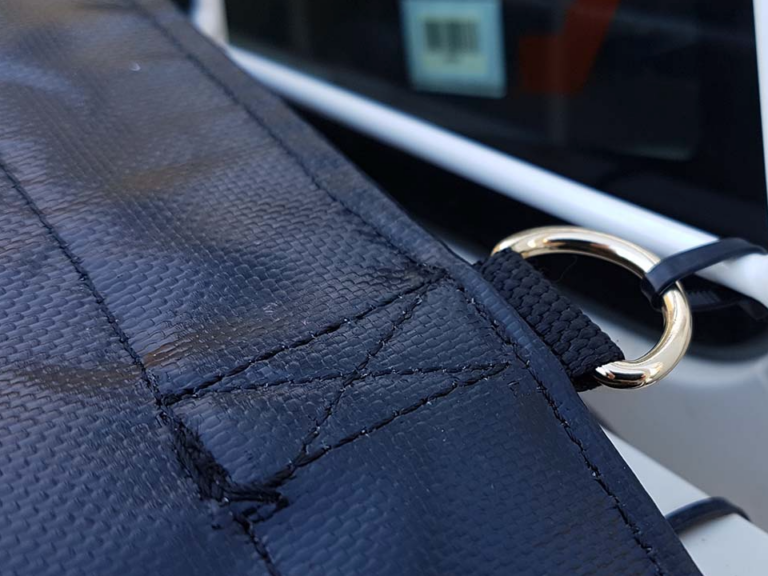
When it comes to how to cover a trailer, the tying technique you will use depends on whether or not your tarp has dedicated connections like D-Ringsor eyelets. With these connections, it’s a simple matter of threading rope or using some other connection to secure the tarp to the trailer tie bars or securing points.
Most of the time, you will find heavy-duty tarp clips to be a workable alternative when you’re trying to figure out how to put a tarp on a trailer without these connections. But, it’s better to only use this method for lighter loads because the temporary option, no matter how strong, won’t be as secure as eyelets or D-Rings on a purpose-built trailer cover.
In an emergency, such as when a tarp tears, it’s possible to place something nonabrasive and round into the folds of the tarp and close the tarp around it with rope or bungee cord. Such jury-rigging is unreliable and should only be used when there is no other alternative. If you’re transporting goods in a trailer and your cover has become damaged, your safest course of action is to pull over, assess the damage and readjust and secure the cover where possible.
Correct Loading Procedure When Covering a Trailer
The question of, “How to Cover a Trailer With a Tarp”, is only part of the equation. How you load the trailer is equally as important. Always put the heavy items on the bottom and the lighter items on top.
Be sure to spread the load evenly across the flat surface of the trailer. Load the heaviest of items over the wheels and axles and balance the load evenly across the flat space. Fasten the heaviest items with a separate set of straps or cords before attaching the tarp.
Finally, avoid overloading your trailer or allowing too much to overhang any side of the vehicle. If something doesn’t fit, then you’re going to need a bigger vehicle. If you have to, make multiple trips rather than trying to cram the load together for one trip. Your safety and the safety of those you share the road with are paramount in all cases.
Miscellaneous considerations when transporting in trailers
Don’t transport loose tools. Put them in toolboxes, and fasten them properly. When it comes to bigger tools like rakes and shovels, which won’t fit into a toolbox, you can use a heavy-duty tarp or cargo net instead. It’s often easier to transport garden refuse if you bag it than if you simply toss it into the trailer.
Spider Tarp Covers
To transport goods safely, securely, and reliably, consider using an Australian-designed and purpose-built trailer cover solution from Spider Tarp.
Manufactured using either waterproof 230gsm PE or Spider-Mesh™ 350gsm PVC fabrics, you can choose between two high-quality materials to tailor the product to your exact needs. Available in various shapes and sizes to suit open and caged box trailers from 6’ x 4’ up to 8’ x 5’, these trailer covers are designed to fit without any unnecessary overhang.
The patented Spider Tarp attachment system makes securing the cover easier than ever with eight adjustable attachment cords and Spider-Lock™ hooks that are permanently fitted on each corner and midway along each edge. On our larger trailer cover, there are an additional eight brass eyelets positioned midway between the attachment cords – giving users extra flexibility when it comes to security. To add even more stability if necessary, your trailer covers can be further secured with 120cm Spider-Cord™ with Carabiner
This product has been designed with convenience, strength and dependability in mind – making the Spider Tarp Trailer Cover the perfect accompaniment for outdoor activities or transporting goods during all types of weather conditions.
Learn more about Spider Covers, or shop online for specials and your trailer cover today.
This month, Spider Tarp Managing Director Graeme Breen and Omni Alliance showcased a range of truck covers at SEMA in Las Vegas with a large interest from US automotive aftermarket retailers.
Specialty Equipment Market Association (SEMA) now consists of 6,383 companies worldwide, bringing together aftermarket manufacturers, original equipment manufacturers (OEM), media, car dealers, specialty equipment distributors, installers, retailers and restoration specialists.
The largest of the SEMA events held annually during the first week of November is the SEMA Show at the Las Vegas Convention Center in Las Vegas, Nevada in conjunction with the Automotive Aftermarket Industry Week.

"*" indicates required fields
Spider Tarp is an Australian company that designs and manufactures unique adjustable bungee cords and premium vehicle load covers. Spider Tarp was born from the frustration of using traditional cargo nets that tangle and snag. We saw the need for a quick, simple and safe attachment system that anyone can easily use.
If you need to cover high and uneven loads on your ute, truck or trailer, or need a short or long bungee cord for an unusual or difficult application, Spider Tarp products make the job a breeze.


